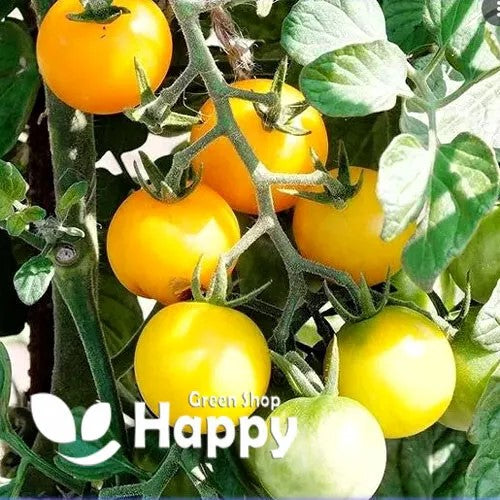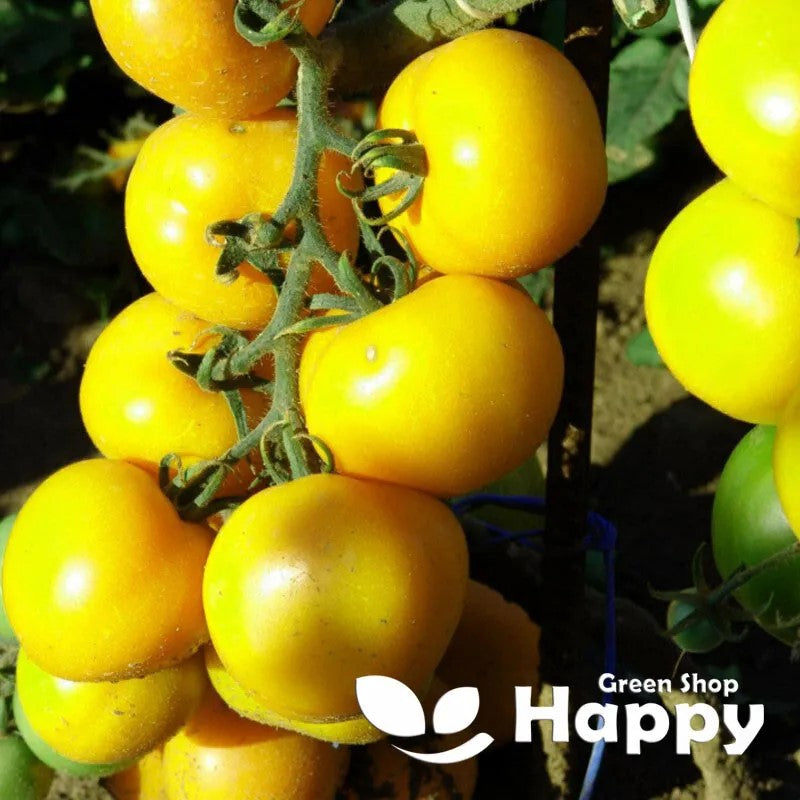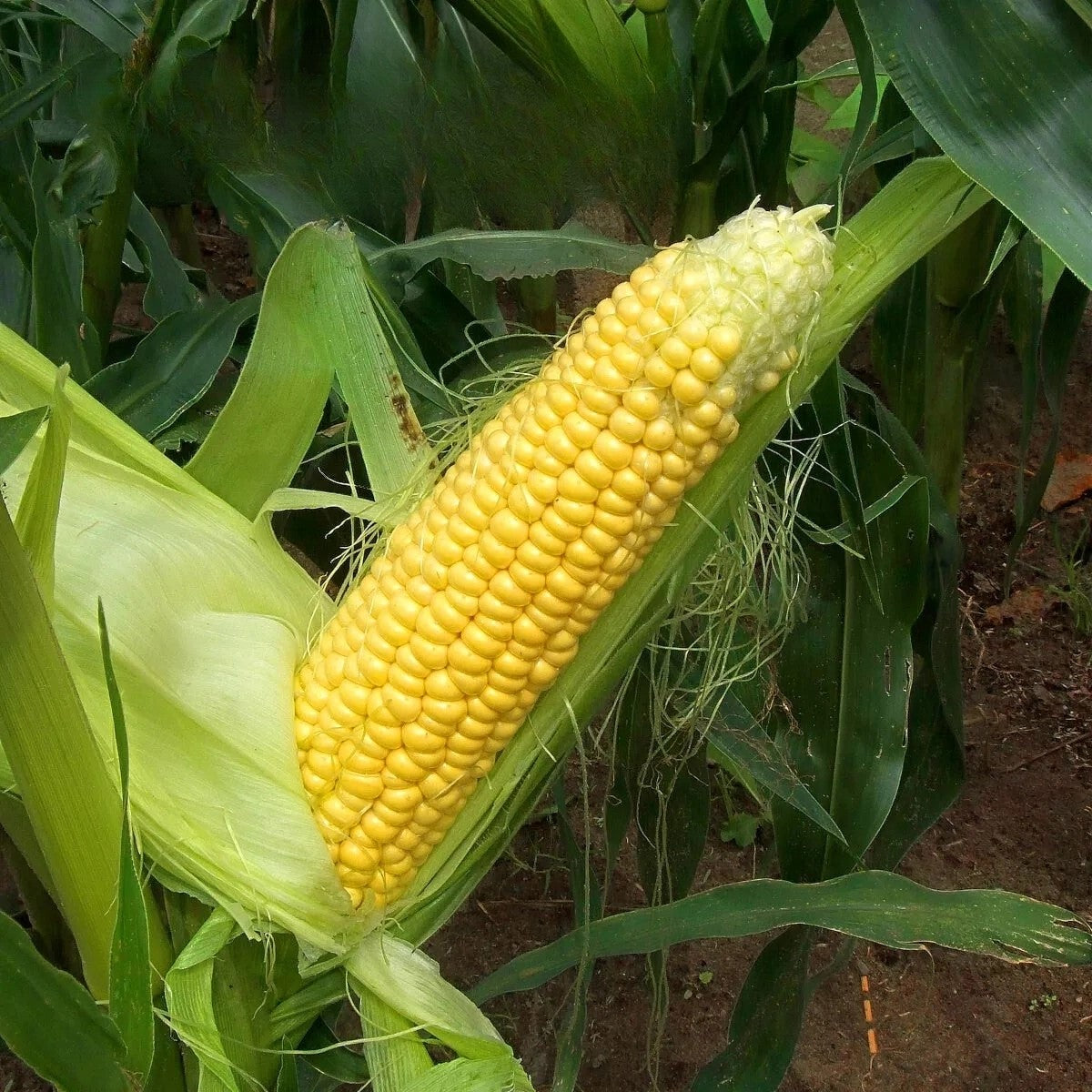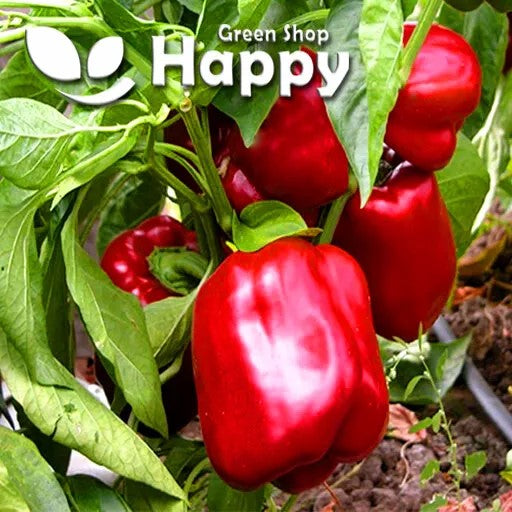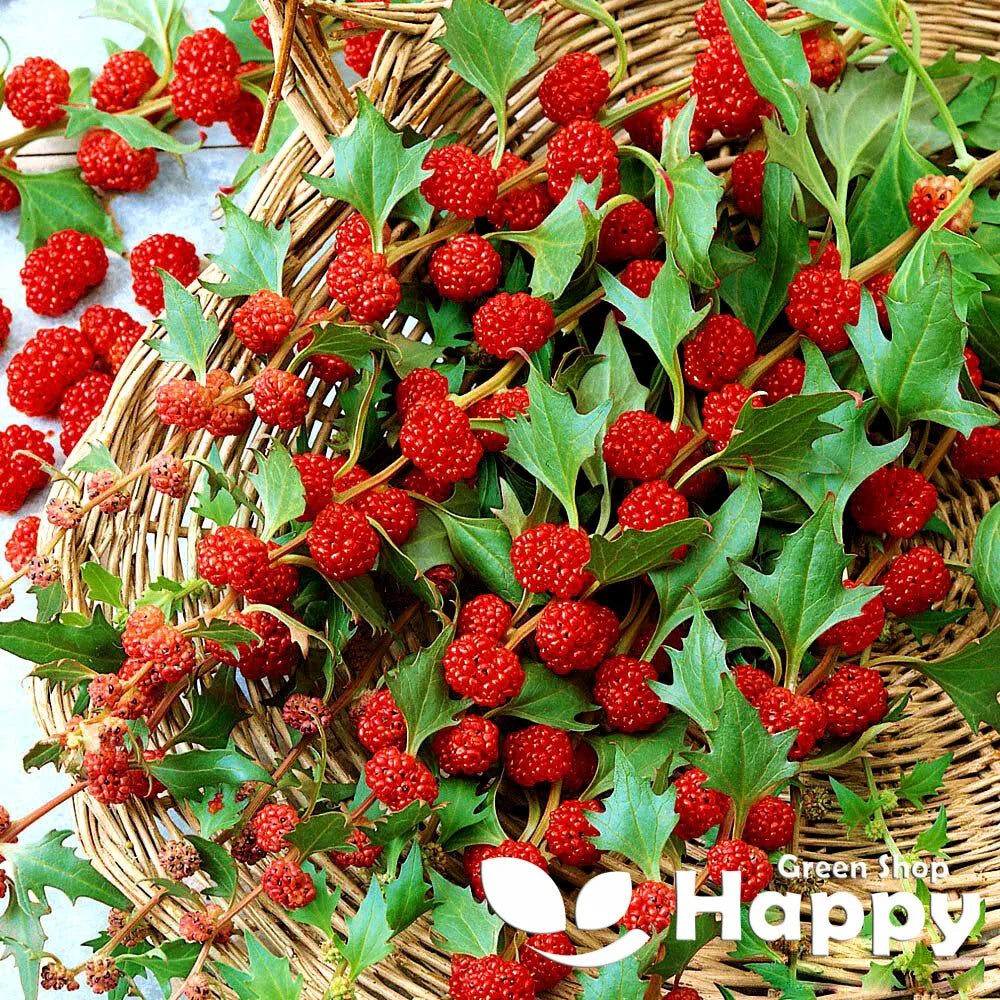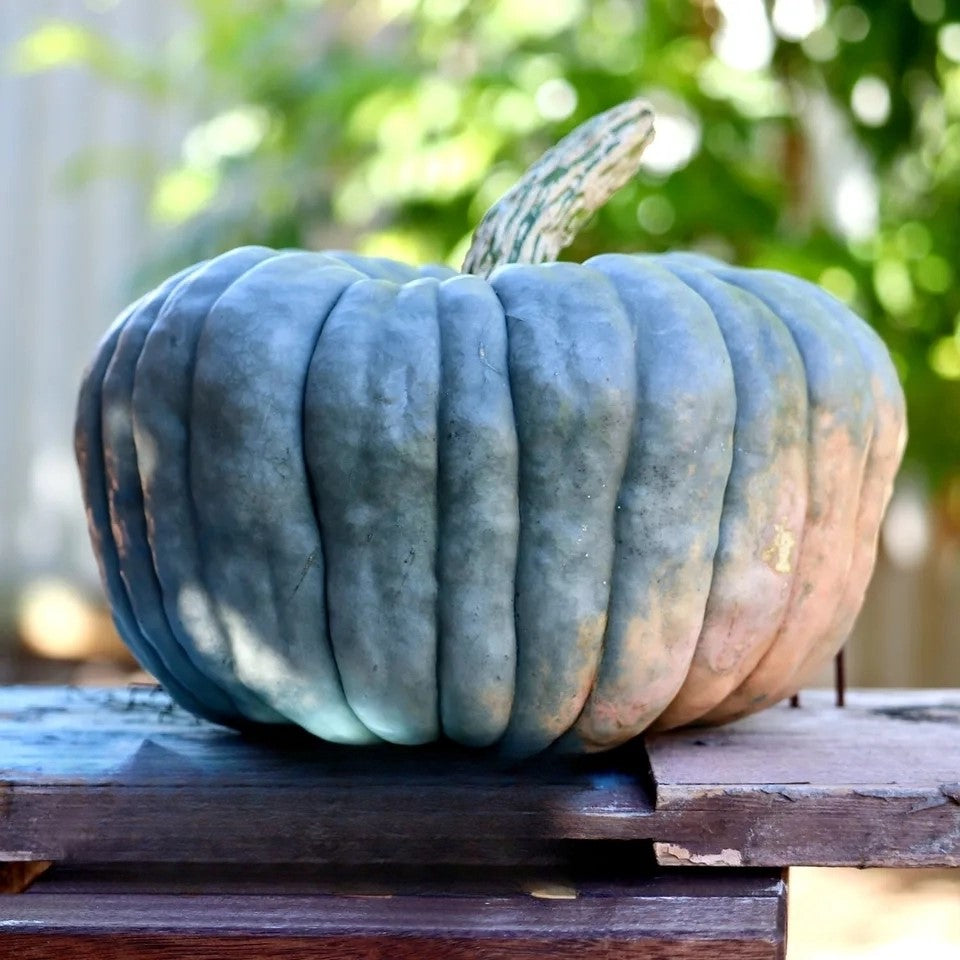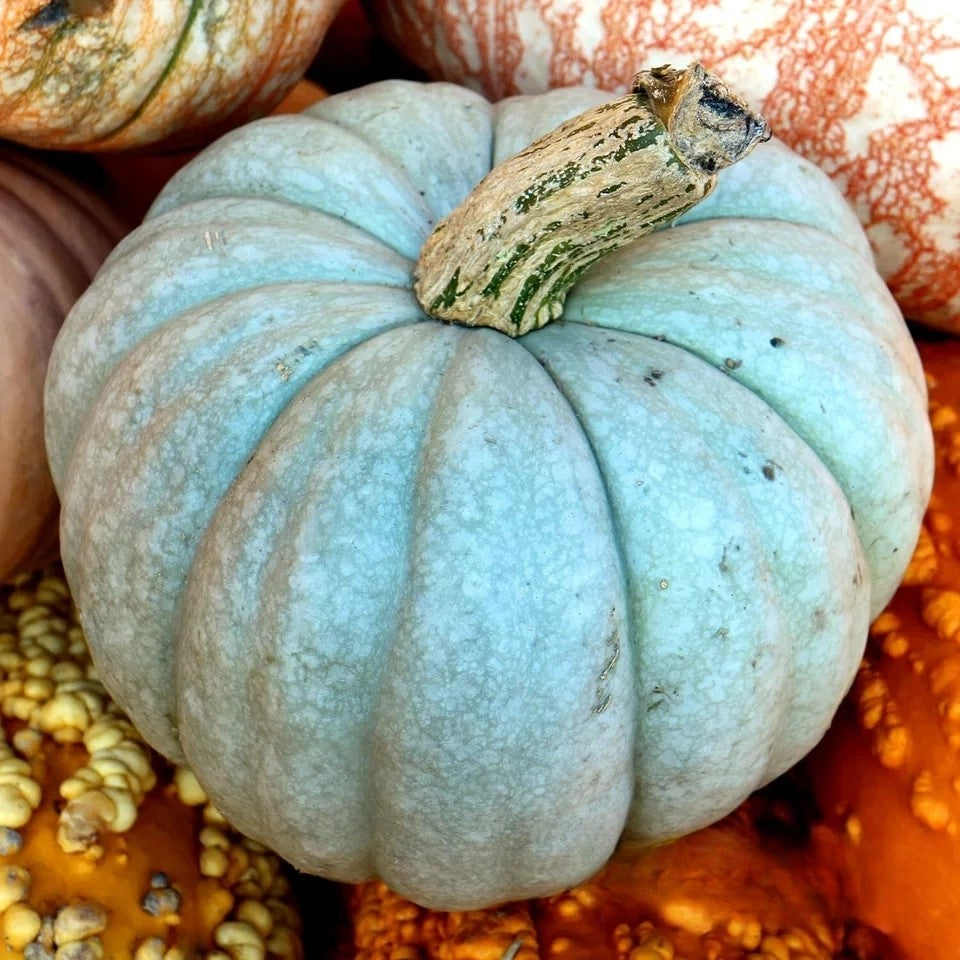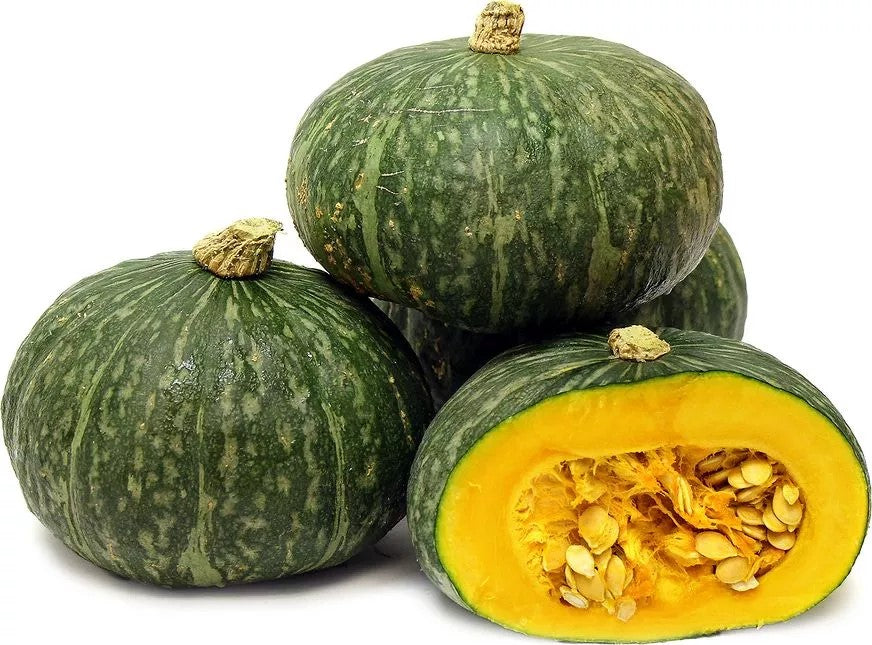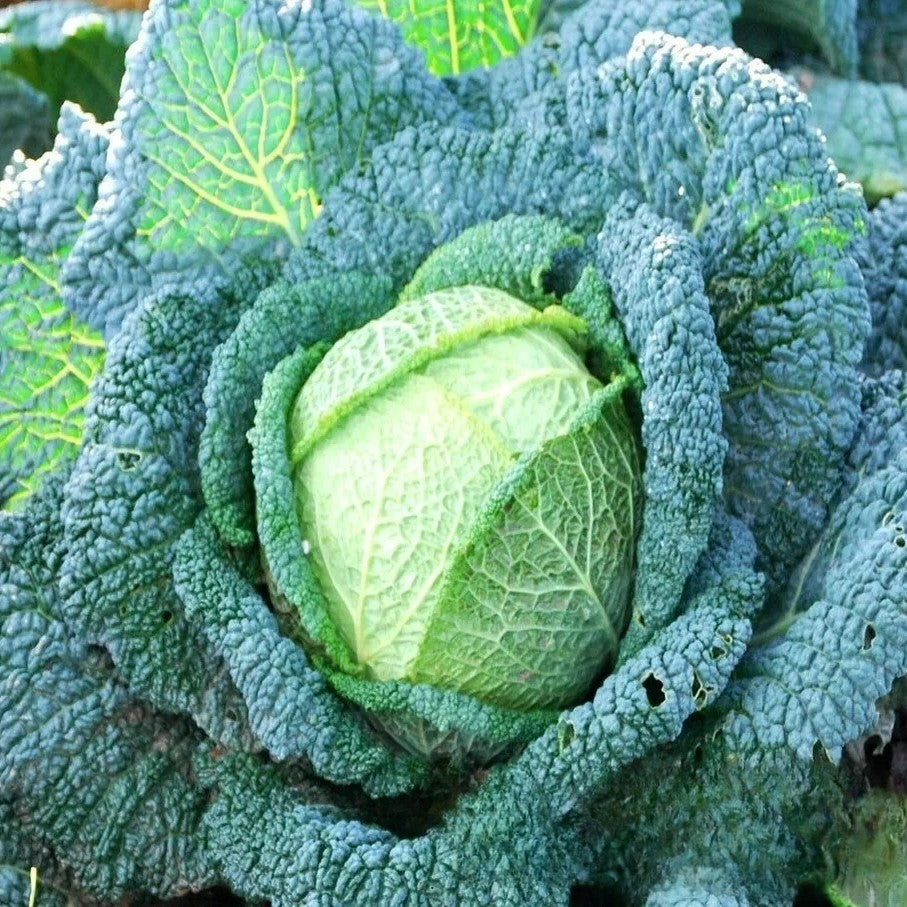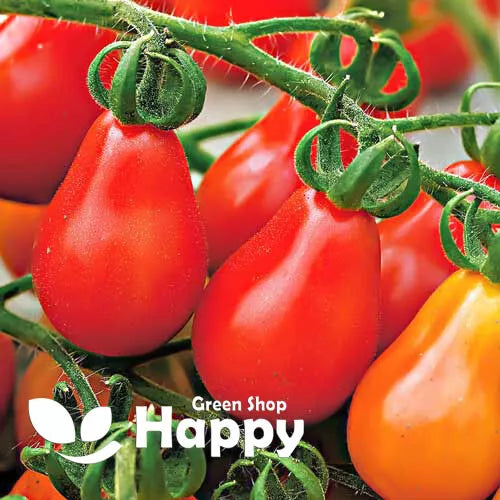Sort by:
51 products
51 products
Tomato 'Yellow Romus' – Seeds (Solanum lycopersicum)
The Tomato 'Yellow Romus' is a productive variety that produces bright yellow, elongated plum-shaped fruits with a mild, sweet flavor. Known for its attractive golden color and meaty texture, this tomato is excellent for fresh eating, sauces, and preserves. A reliable mid-season crop, it’s perfect for greenhouse or outdoor cultivation and adds vibrant color to your tomato harvest.
How to Grow
-
Sow indoors from February to April, 0.5 cm deep in trays or pots.
-
Keep at 18–22°C until germination.
-
Transplant seedlings into larger pots, then outdoors or into a greenhouse after frost has passed.
-
Support plants with stakes or canes for best yields.
Key Features
-
Elongated, plum-shaped golden yellow fruits
-
Mild, sweet, and meaty flavor
-
High yields throughout the season
-
Suitable for greenhouse or outdoor growing
-
Excellent for fresh use, sauces, and preserving
Ideal For
-
Fresh salads and snacks
-
Homemade sauces and preserves
-
Bright, colorful vegetable gardens
Sowing & Harvest
-
Sow: February to April
-
Plant out: May to June
-
Harvest: July to September
Quick Tip
-
For the sweetest flavor, allow fruits to ripen fully on the vine before harvesting.
Tomato Pink 'Maliniak' – Seeds (Solanum lycopersicum)
The Tomato Pink 'Maliniak' is a traditional Polish heirloom variety known for its large, pink, fleshy fruits bursting with rich, sweet flavor. This mid-season tomato is a favorite among home gardeners for its outstanding taste, meaty texture, and versatility in the kitchen. Perfect for slicing, fresh salads, and sandwiches, it also performs beautifully in sauces and preserves.
How to Grow
-
Sow indoors from February to April, 0.5 cm deep in seed trays or pots.
-
Keep at 18–22°C until germination.
-
Transplant seedlings into larger pots when strong enough, then outdoors or into a greenhouse after frost has passed.
-
Provide support as plants grow tall and bear heavy fruits.
Key Features
-
Large, pink fleshy fruits with rich, sweet taste
-
Traditional Polish heirloom tomato
-
Mid-season variety with reliable yields
-
Ideal for fresh eating and cooking
-
Strong, healthy plants suitable for greenhouse or outdoor cultivation
Ideal For
-
Fresh salads and sandwiches
-
Cooking into sauces and soups
-
Traditional and heirloom vegetable gardens
Sowing & Harvest
-
Sow: February to April
-
Plant out: May to June (after frost)
-
Harvest: July to September
Quick Tip
-
For best flavor, allow fruits to fully ripen on the vine before picking. Regular feeding boosts size and sweetness.
Sweet Corn 'Golden Bantam' – Seeds
(Zea mays) – Classic Heirloom Variety
Sweet Corn 'Golden Bantam' is one of the most famous and reliable heirloom corn varieties, loved for its richly flavored golden-yellow kernels. Compact and highly productive, this variety produces medium-sized cobs packed with tender, sweet corn. Known for its adaptability and dependable harvests, it has been a gardener’s favorite for over a century.
Key Features
-
Type: Sweet corn (annual)
-
Height: 150–180 cm tall
-
Cobs: 12–18 cm long, golden-yellow kernels
-
Flavor: Classic sweet and creamy corn taste
-
Harvest: Mid-season (75–90 days after sowing)
-
Heritage: Famous heirloom, first introduced in the early 1900s
Ideal For
-
Home gardens and allotments
-
Fresh eating, grilling, and steaming
-
Freezing and preserving
-
Classic heirloom vegetable collections
Sowing & Growing
-
Sow indoors: April–May, in pots or modules.
-
Sow outdoors: May–June, after frost has passed.
-
Spacing: 20–25 cm between plants; 60 cm between rows.
-
Soil: Rich, fertile, well-drained soil.
-
Sunlight: Full sun, sheltered location.
-
Pollination: Plant in blocks of at least 3–4 rows for best cob formation.
Care Tips
-
Water well, especially during dry periods and when tassels appear.
-
Mulch around the base to retain soil moisture.
-
Harvest when silks turn brown and kernels exude milky juice when pressed.
Sweet Bell Pepper 'California Wonder' Red – Seeds (Capsicum annuum)
Sweet Bell Pepper 'California Wonder' Red is a classic, high-yielding variety producing large, blocky, bright red fruits with a sweet, crisp flavor. Perfect for fresh eating, salads, roasting, or stuffing, it is a versatile addition to any vegetable garden.
This vigorous and productive plant thrives in warm, sunny conditions and is ideal for home gardens, greenhouses, and containers.
How to Grow
-
Sow indoors: February – April
-
Transplant outdoors: May – June, after last frost
-
Depth: 0.5–1 cm
-
Spacing: 40–50 cm between plants, rows 60–80 cm apart
-
Position: Full sun, sheltered and warm
-
Soil: Fertile, well-drained, rich in organic matter
-
Watering: Keep soil consistently moist
Key Features
-
Large, blocky, bright red fruits with sweet, crisp flavor
-
High-yielding and vigorous growth
-
Ideal for fresh eating, salads, roasting, and stuffing
-
Suitable for home gardens, greenhouses, and containers
-
Classic, reliable bell pepper variety
Harvest
-
Harvesting period: July – September
-
Pick fruits when fully colored and firm for best flavor.
Short Tip
Regular harvesting encourages continuous production and prevents fruits from becoming overripe.
Strawberry Stick – Seeds
(Chenopodium foliosum)
Strawberry Stick is a unique annual plant grown for its bright red, strawberry-like seeds. These edible seeds are not only nutritious but also add a decorative touch to gardens. Its upright, bushy habit makes it perfect for borders, vegetable gardens, and ornamental planting. Easy to grow and drought-tolerant, it’s both practical and attractive.
Why Grow Strawberry Stick?
-
Bright red, edible seeds
-
Attractive upright, bushy foliage
-
Nutritious and ornamental
-
Easy to grow and drought-tolerant
Key Features
-
Type: Annual
-
Height: 50–80 cm
-
Flowers: Summer
-
Position: Full sun to partial shade
-
Soil: Well-drained, fertile
Ideal For
-
Vegetable gardens and edible landscaping
-
Borders and ornamental plantings
-
Pollinator-friendly gardens
-
Low-maintenance garden displays
Sowing & Growing
-
Sow indoors: February–April in seed trays
-
Sow outdoors: April–May in prepared soil
-
Germination: 10–14 days at 18–20°C
-
Spacing: 25–30 cm apart
-
Care: Moderate watering; remove weeds for best growth
Squash 'Queensland Blue' – Seeds (Cucurbita maxima)
Squash 'Queensland Blue' is a robust pumpkin variety producing large, flattened, blue-grey fruits with sweet, golden-orange flesh. Its rich flavor makes it perfect for roasting, soups, stews, and baking. Known for excellent storage qualities, it keeps well throughout the winter months.
Ideal for home gardens, allotments, and vegetable patches, this variety combines high yield with a striking appearance and outstanding taste.
How to Grow
-
Sow indoors: March – April
-
Sow outdoors: May – June, after last frost
-
Depth: 2–3 cm
-
Spacing: 100–120 cm between plants
-
Position: Full sun, sheltered from strong winds
-
Soil: Fertile, well-drained, enriched with compost
-
Watering: Regular and deep, especially during fruiting
Key Features
-
Large, flattened blue-grey fruits with sweet, golden-orange flesh
-
Excellent for roasting, soups, stews, and baking
-
High-yielding and vigorous growth
-
Long storage life, ideal for winter use
-
Decorative and versatile vegetable
Harvest
-
Harvesting period: September – November
-
Pick fruits when the skin is hard and fully colored for best storage and flavor.
Short Tip
Leave a few centimeters of stem when harvesting to extend storage life.
Squash 'Ambar' Seeds (Cucurbita pepo)
Grow something unique with Squash 'Ambar', a vigorous hybrid variety that produces glossy, dark green cylindrical fruits with excellent texture and flavor. Known for its high yields and uniform fruits, this variety is a reliable choice for both home gardeners and kitchen enthusiasts. Perfect for grilling, roasting, and stuffing, ‘Ambar’ brings versatility and freshness to your summer meals.
How to Grow
-
Sow indoors in April–May or directly outdoors after frost.
-
Use fertile, well-drained soil in full sun.
-
Sow 2–3 seeds 2 cm deep in pots or outdoor stations.
-
Thin to the strongest seedling, spacing 60–80 cm apart.
-
Water regularly and feed for abundant crops.
Key Features
-
High-yielding hybrid squash variety
-
Glossy dark green, uniform fruits
-
Excellent texture and mild, delicious flavor
-
Vigorous, productive plants all season
-
Ideal for grilling, stuffing, or light summer dishes
Ideal For
-
Home gardeners wanting reliable, heavy crops
-
Summer vegetable gardens
-
Fresh, healthy cooking from garden to table
-
Growers looking for uniform, market-quality fruits
Sowing
-
Best time: April to June
-
Depth: 2 cm
-
Spacing: 60–80 cm between plants
-
Position: Sunny, sheltered spot with fertile soil
-
Harvest: From July to September
Quick Tip
-
Harvest fruits regularly when young (15–20 cm) to ensure tender texture and encourage the plant to keep producing.
Savoy Cabbage 'Rocket' – Seeds
(Brassica oleracea) – Crisp, Crinkled Leaves & Fast Growth
Savoy Cabbage 'Rocket' is a vigorous, early-maturing variety prized for its tender, crinkled dark-green leaves and compact, dense heads. It delivers a mild, sweet flavor and is ideal for fresh salads, cooking, and steaming. Perfect for home gardens and small-scale cultivation.
Key Features
-
Type: Biennial, grown as annual
-
Heads: Medium-sized, dense, crinkled dark-green leaves
-
Flavor: Mild, sweet, tender
-
Harvest: Early to mid-season
-
Use: Salads, cooking, steaming, stir-fries, freezing
Ideal For
-
Home gardens and allotments
-
Early harvest for fresh culinary use
-
Succession planting for continuous supply
-
Gourmet cooking and healthy meals
Sowing & Growing
-
Sow indoors: February–April for transplanting.
-
Sow outdoors: March–May for summer harvest.
-
Spacing: 45–50 cm between plants, 60–70 cm between rows.
-
Soil: Fertile, well-drained soil with added compost.
-
Sunlight: Full sun for best growth.
-
Harvest: When heads are firm and well-formed.
Care Tips
-
Keep soil consistently moist to prevent splitting.
-
Protect seedlings from cabbage root fly and caterpillars.
-
Fertilize moderately for dense heads.
Red Pear Tomato – Seeds (Solanum lycopersicum)
The Red Pear Tomato is a charming heirloom variety producing clusters of small, pear-shaped, bright red fruits. With a sweet, tangy flavor and firm texture, these tomatoes are perfect for fresh snacking, salads, or adding a decorative touch to dishes. Highly productive and visually appealing, they are a favorite for both garden aesthetics and culinary use.
How to Grow
-
Sow seeds indoors from February to April, 0.5 cm deep in trays or pots.
-
Maintain 18–22°C until germination.
-
Transplant seedlings into larger pots, then outdoors or in a greenhouse after frost.
-
Support plants with stakes or cages to handle heavy clusters of fruit.
Key Features
-
Heirloom pear-shaped fruits in bright red
-
Sweet, tangy flavor and firm texture
-
High-yielding and productive
-
Ideal for fresh eating and salads
-
Attractive ornamental value for gardens and containers
Ideal For
-
Snacking, fresh salads, and garnishes
-
Home gardens and patio pots
-
Heirloom collections and colorful vegetable displays
Sowing & Harvest
-
Sow: February to April
-
Plant out: May to June
-
Harvest: July to September
Quick Tip
-
Pick fruits regularly as they ripen to encourage continuous production and maintain plant vigor.
Showing 36/51

